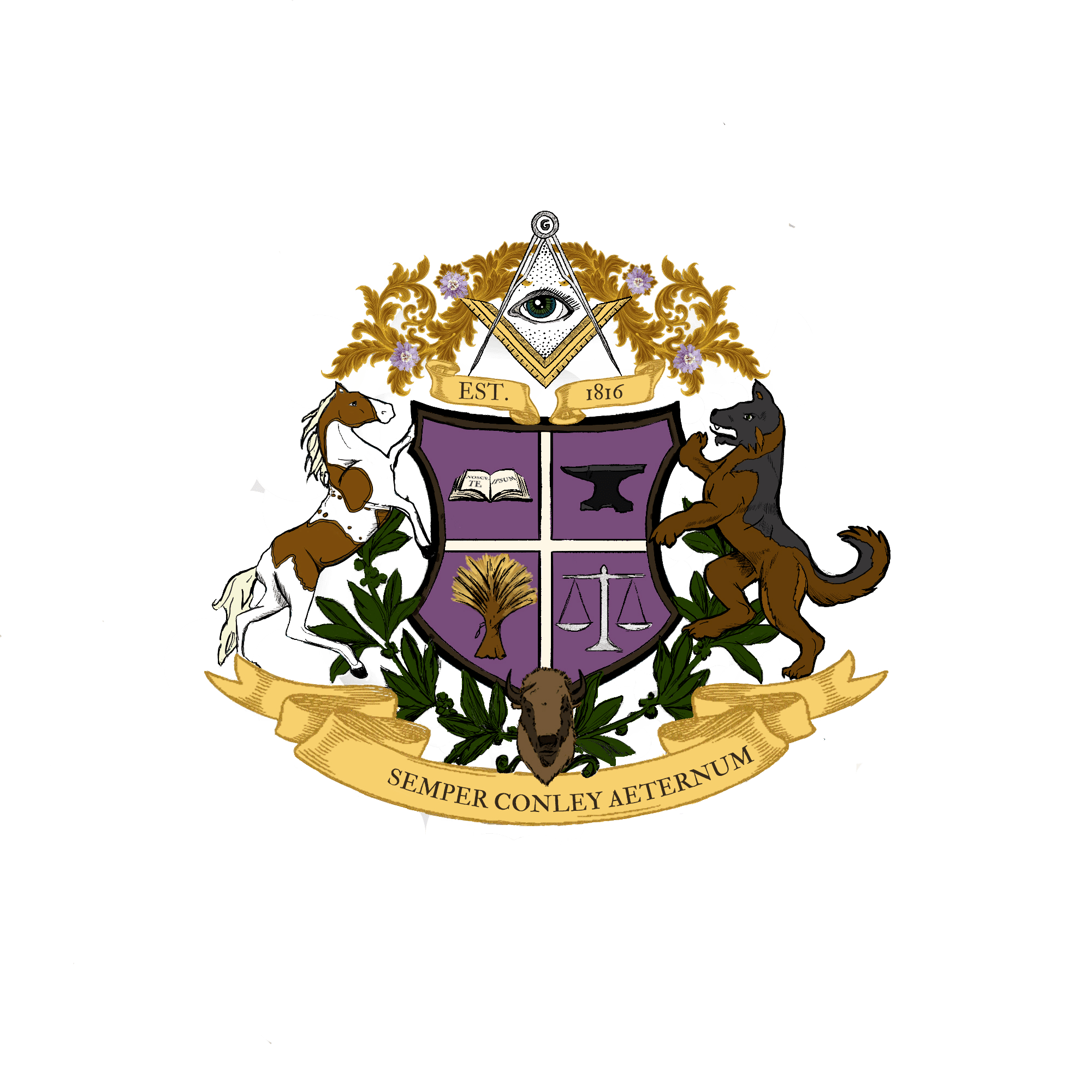FOREWORD
The Conley Family came into focus not long after the smoke cleared from the American Revolutionary War, and the First Continental Congress was formed on January 2, 1776. While the family is not unique in its origins or structure, it is, and continues to be, uncommon in the assets, traditions, and shared identity passed down through eight generations. While many older families have fragmented into disassociation by race, religion, geography, and other factors, The Conley Family still gathers around a set of values which transcend self-identified ethnicity. Some are Asian, others are Latino, and a slight majority self-identify as Black Americans. Yet, a large number are firmly identified in White American communities of many kinds across the country. But, the one common identifier they gather around, is their Conley Identity.
A strong sense of family, complimented by a powerful drive for self-determination, continues to be the overarching theme. At first glance, the defining characteristics of rugged individualism, and intense group identity, might appear to be contradictory. But, upon further examination, these traits have produced a long line of individuals with a rich history of contributions to American life, without a loss of pride in family affiliation. One can be absolutely unique, yet be a part of the family, too. Each Conley charts their own journey, a trait resulting in a stunning variety of personalities, perspectives, and endeavors.
Also distinctive has been the family’s longevity spanning more than 200 years. Aided by ethnic ambiguity of the first three generations, one typically heard about a Conley only after they achieved a goal, and rarely before. Because the family’s prominence began just outside of the official city borders of Huntsville, in then unincorporated Madison County, and the original family was Caucasian in appearance, there are few records of them as ‘Colored’ people in the City of Huntsville. Upon a search for their presence, most records list Conley Family members as ‘white’ living in the towns of Normal, Meridianville, Harvest, or Brownsboro, all unincorporated areas in Madison County from 1804 until about 1840.
Conleys were, and many still are, often sequestered in family compounds in rural areas from Alabama to Arizona, from Maine to Montana, from Kentucky to Colorado. Their penchant for privacy, practical approach to cloaking their economic prosperity, and their astute avoidance of the well-documented racial conflicts in early America, enabled many family members to thrive away from the spotlight that tore the fabric of similar families.
In a time of deeply ingrained, open prejudice against anyone of African, Irish, Jewish, Scottish descent, most Conleys were ‘other’. Well-known by reputation, warm and generous on a personal level, but unidentifiable to most people as belonging to a specific ethnic group. Too fair-skinned to be Spaniards, without enough Irish cultural habits to be Scots-Irish, and without enough African physical traits to be obviously seen as 'Black’, they existed in the margins of society for three generations. Throughout the wilderness of the Tennessee Valley, Rocky Mountains, and forests of New England, the general public could rarely identify an individual Conley in public.
According to an Ohio State study published in the late 1950s, the number of fair-skinned blacks crossing the color line between 1861 and 1950 grew from 3,000 a year to more than 15,000 a year. And by the trend's peak in 1950, it was estimated 28 million Americans who identified themselves as white, had black ancestry. While many families in the same period fragmented into factions based on race, Conleys aggressively resisted such fragmentation of the family identity. While some appeared African, and others appeared Nordic, Conleys avoided the corrosive effects of disavowing or disassociating from one another based on race, religion, or physical appearance. Those who ‘passed’ for Anglo-Saxon did so as a temporary measure to avoid certain harm, but never as a permanent condition of denial. They just went about the business of living, and freely associated with one another as relatives.
Eschewing such prejudices burnished their legendary reputation for independent thinking, and quite a bit of eccentricity.
Conleys identifying as Latino in the United States shown above.
The ‘Conley Bond’ is a voluntary identity built on a foundation of multicultural lineage, self-determination, self-reliance, and achievement. Every Conley shares the same complex history, lineage, and legacy spanning seven generations. Each Conley, regardless of societal station, feels Conley Forever, and Forever Conley.
Shirley Mae Scruggs Vannah
Alexander Donald Conley III
Charles Swinger Conley
David Paul MacLeod
Nancy MacLeod Proulx
Valerie Conley Wood
Sadie Irene Scruggs Birchell
Jerome Rodgers
Earl Lee Pruitt












